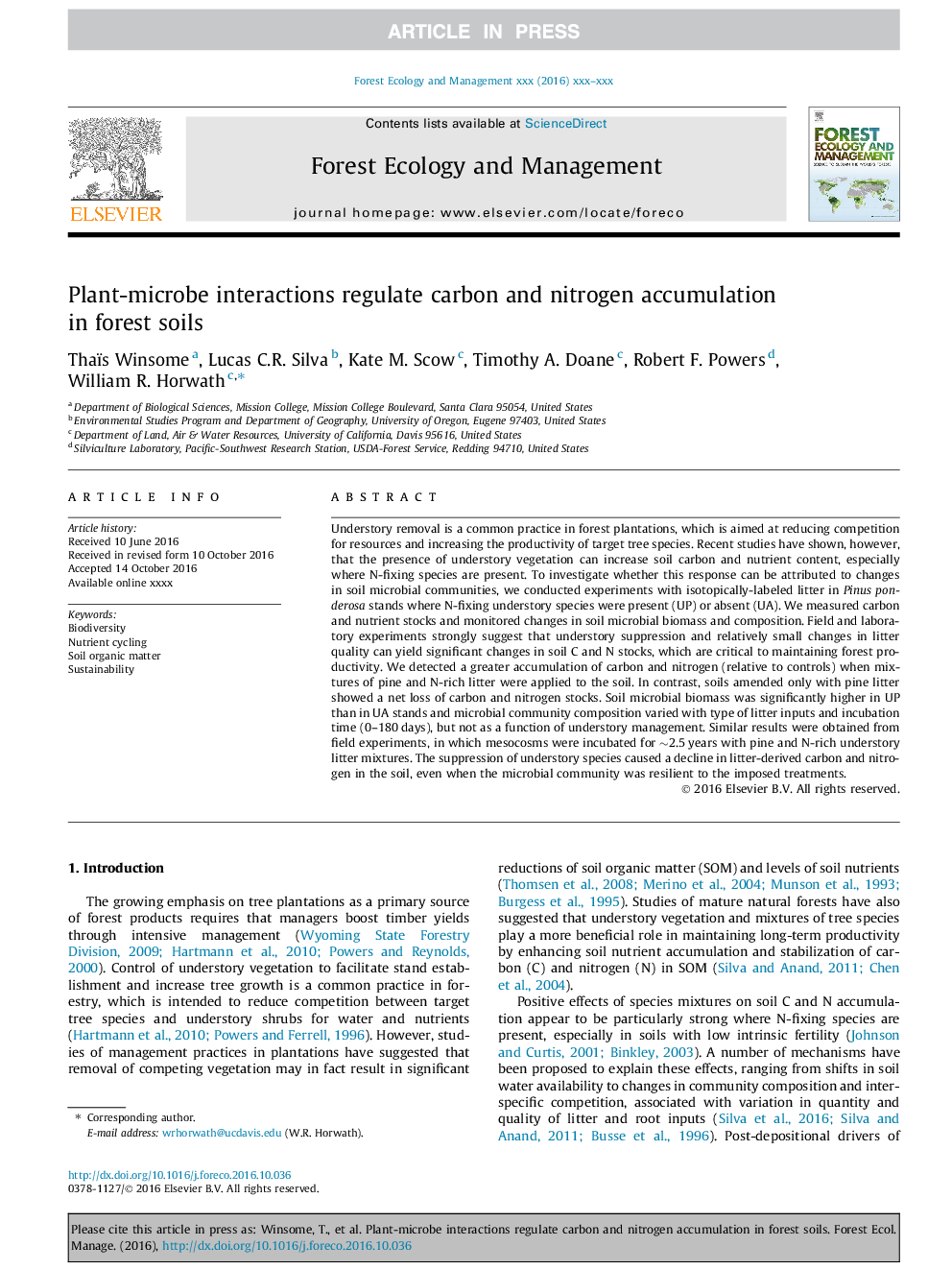| Article ID | Journal | Published Year | Pages | File Type |
|---|---|---|---|---|
| 4759644 | Forest Ecology and Management | 2017 | 9 Pages |
Abstract
Understory removal is a common practice in forest plantations, which is aimed at reducing competition for resources and increasing the productivity of target tree species. Recent studies have shown, however, that the presence of understory vegetation can increase soil carbon and nutrient content, especially where N-fixing species are present. To investigate whether this response can be attributed to changes in soil microbial communities, we conducted experiments with isotopically-labeled litter in Pinus ponderosa stands where N-fixing understory species were present (UP) or absent (UA). We measured carbon and nutrient stocks and monitored changes in soil microbial biomass and composition. Field and laboratory experiments strongly suggest that understory suppression and relatively small changes in litter quality can yield significant changes in soil C and N stocks, which are critical to maintaining forest productivity. We detected a greater accumulation of carbon and nitrogen (relative to controls) when mixtures of pine and N-rich litter were applied to the soil. In contrast, soils amended only with pine litter showed a net loss of carbon and nitrogen stocks. Soil microbial biomass was significantly higher in UP than in UA stands and microbial community composition varied with type of litter inputs and incubation time (0-180Â days), but not as a function of understory management. Similar results were obtained from field experiments, in which mesocosms were incubated for â¼2.5Â years with pine and N-rich understory litter mixtures. The suppression of understory species caused a decline in litter-derived carbon and nitrogen in the soil, even when the microbial community was resilient to the imposed treatments.
Related Topics
Life Sciences
Agricultural and Biological Sciences
Ecology, Evolution, Behavior and Systematics
Authors
Thaïs Winsome, Lucas C.R. Silva, Kate M. Scow, Timothy A. Doane, Robert F. Powers, William R. Horwath,
